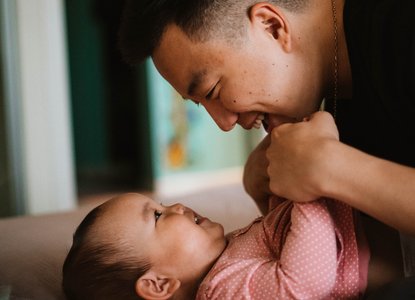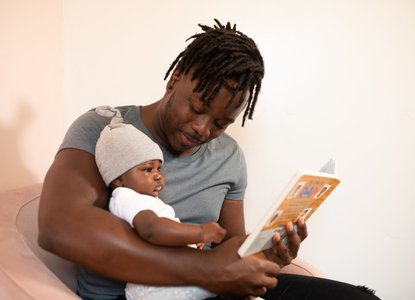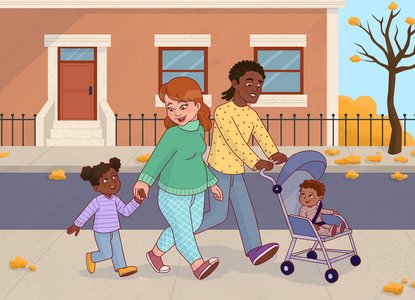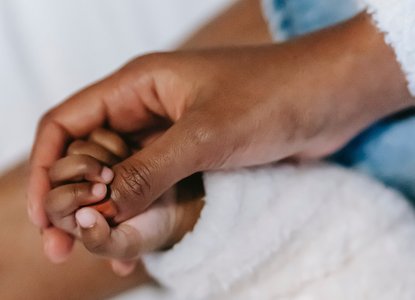If your baby is diagnosed as deaf or as having hearing loss, talking to them is still very important.
By moving their mouth or limbs, cooing, babbling or smiling, your baby is communicating with you and looking for a response. Deafness doesn’t prevent this type of communication. The important thing is to try to make sure that your baby understands what you say.
If your baby has a hearing aid or cochlear implant
Some babies may understand what you say if they use hearing aids or a cochlear implant. They may be able to use these to learn to talk just like a hearing child. You can make this easier for them by turning off the TV and radio and putting their aids on as much as possible.
If your baby has a hearing aid and still can’t hear all speaking sounds, always use it anyway. It can take a few months to get used to listening through a hearing aid.
Your baby may not hear all the sounds of speech through their hearing aid or you might not yet know what they can hear. You might not know yet how successful the implant will be, or they might be waiting for an implant. To solve these problems, you could try using Cued Speech.
What is Cued Speech?
Cued Speech uses eight hand shapes in four positions near the mouth at the same time as you speak. It makes lip-reading much clearer. With Cued Speech, deaf children can ‘see’ sound-based English. They can use this to help them speak, read and write.
How can I help my child learn to communicate?
All forms of communicating are important, including eye contact, body language, gurgles, kicks and facial expressions like smiling, so always try to respond to them.
Talking to your child can fit easily into your daily routine. Talk about the things you see when you’re on the bus or walking to the shops, or doing day-to-day things like a nappy change, bath time or getting dressed.
Talking tips
- Talk (and cue, if you decide to use Cued Speech) to your deaf child when you’re playing together.
- Have fun with nursery rhymes and songs, especially those with actions.
- Get your child’s attention when you want to talk, and make sure that they can see you clearly.
- Listen carefully and give your child time to communicate. Take turns.
- Always respond in some way when she says something.
- Limit TV time. Try to watch TV together so you can talk about what happens.
- Keep background noise (for example radios and music) to a minimum.
Other helpful resources
- Talk To Your Baby is the National Literacy Trust’s early years language campaign to encourage parents and carers to talk more to their children from birth to three.
- British Sign Language
- Cued Speech Association UK
- Makaton
- NDCS (National Deaf Children’s Society)
- RNID (Royal National Institute for Deaf People)
- Auditory Verbal UK




